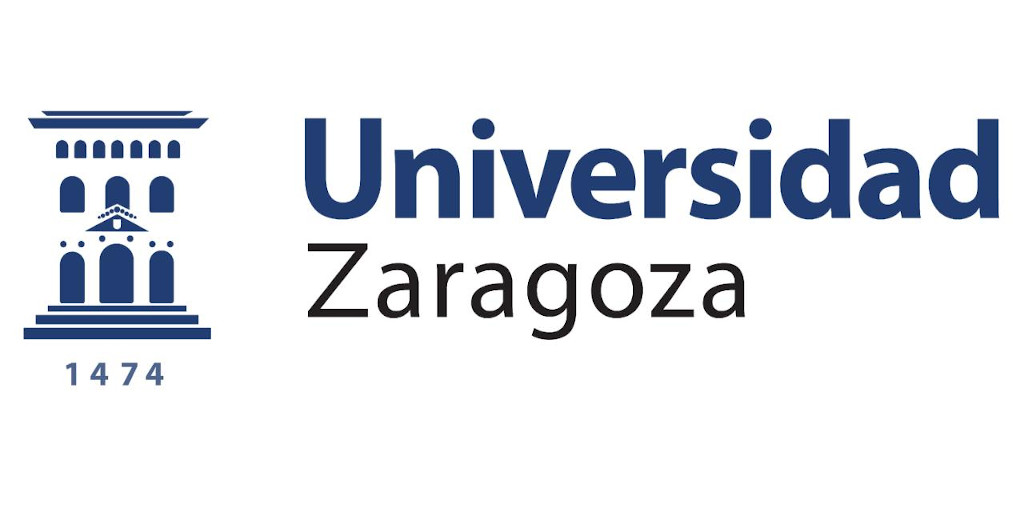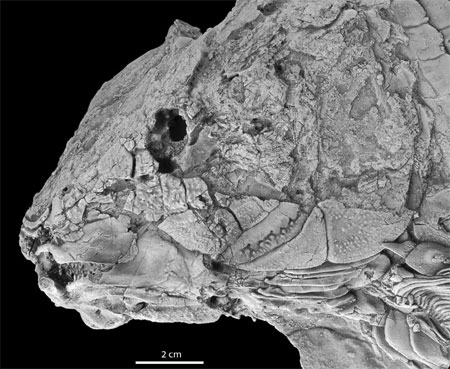Camerichthys lunae, que es el nombre que ha recibido la nueva especie. El nombre genérico esta dedicado a la Cuenca de Cameros (cuenca geológica que abarca parte de las provincias de Soria, Burgos y La Rioja). El holotipo se puede observar en la fotografía. Se trata de un magnífico ejemplar que conserva la práctica totalidad del cráneo en perfecta articulación. También se ha conservado la parte anterodorsal del cuerpo, donde se preservan parte de la aleta dorsal y numerosas escamas (mucho más robustas que las de los principales grupos de peces actuales).
Camerichthys es el primer representante descrito en la Península ibérica del orden de los semionotiformes. Sus fósiles son relativamente frecuentes, pero son dientes aislados que no habían permitido hacer identificaciones precisas. Los semionotiformes es grupo extinguido hace más de 90 millones, pero que tiene algunos parientes en la actualidad. Se incluyen en subdivisión Ginglymodi (Holostei, Neopterygii), la misma a la cual pertenecen los actuales “peces caimán” (Lepisosteiformes).
Los resultados de esta investigación han sido publicados en la prestigiosa revista científica “Journal of Systematic Palaeontology” con el título de “A new semionotiform actinopterygian fish from the Mesozoic of Spain and its phylogenetic implications”,
Más información en Dinoastur
Os adjuntamos el resumen de la publicación:
Camerichthys lunae gen. et sp. nov. is a semionotiform actinopterygian fish described from the newly reported locality of San Andrés de San Pedro (province of Soria, Spain). The material, an articulated, partial three-dimensional specimen, was unearthed from the Tithonian–Berriasian beds of the Matute Formation (Tera Group) in the continental Cameros Basin. The new taxon, Camerichthys lunae gen. et sp. nov., differs from other ginglymodians in presenting a unique combination of characters plus: presence of a suprapreopercular bone; antorbital intermediate in depth in relation to the other anterior infraorbitals; and infraorbital placed in the anterior border of the orbit subdivided into two portions (three uniquely derived characters). The results of the cladistic analysis show that the new genus from Soria cannot be assigned to any of the three semionotiform families, Callipurbeckiidae, Macrosemiidae or Semionotidae. It is considered Semionotiformes incertae sedis. In the more resolutive analysis, with ordered characters, Camerichthys lunae gen. et sp. nov. appears as the sister group of the clade formed by the families Callipurbeckiidae plus Macrosemiidae. The effects of the new genus on the phylogeny of these two families and Dapedium, Semionotus and Paralepidotus, are discussed. Camerichthys gen. nov. is the first ginglymodian genus endemic to the Iberian Peninsula.
Camerichthys es el primer representante descrito en la Península ibérica del orden de los semionotiformes. Sus fósiles son relativamente frecuentes, pero son dientes aislados que no habían permitido hacer identificaciones precisas. Los semionotiformes es grupo extinguido hace más de 90 millones, pero que tiene algunos parientes en la actualidad. Se incluyen en subdivisión Ginglymodi (Holostei, Neopterygii), la misma a la cual pertenecen los actuales “peces caimán” (Lepisosteiformes).
Los resultados de esta investigación han sido publicados en la prestigiosa revista científica “Journal of Systematic Palaeontology” con el título de “A new semionotiform actinopterygian fish from the Mesozoic of Spain and its phylogenetic implications”,
Más información en Dinoastur
Os adjuntamos el resumen de la publicación:
Camerichthys lunae gen. et sp. nov. is a semionotiform actinopterygian fish described from the newly reported locality of San Andrés de San Pedro (province of Soria, Spain). The material, an articulated, partial three-dimensional specimen, was unearthed from the Tithonian–Berriasian beds of the Matute Formation (Tera Group) in the continental Cameros Basin. The new taxon, Camerichthys lunae gen. et sp. nov., differs from other ginglymodians in presenting a unique combination of characters plus: presence of a suprapreopercular bone; antorbital intermediate in depth in relation to the other anterior infraorbitals; and infraorbital placed in the anterior border of the orbit subdivided into two portions (three uniquely derived characters). The results of the cladistic analysis show that the new genus from Soria cannot be assigned to any of the three semionotiform families, Callipurbeckiidae, Macrosemiidae or Semionotidae. It is considered Semionotiformes incertae sedis. In the more resolutive analysis, with ordered characters, Camerichthys lunae gen. et sp. nov. appears as the sister group of the clade formed by the families Callipurbeckiidae plus Macrosemiidae. The effects of the new genus on the phylogeny of these two families and Dapedium, Semionotus and Paralepidotus, are discussed. Camerichthys gen. nov. is the first ginglymodian genus endemic to the Iberian Peninsula.
LUGAR San Andrés de San Pedro, Soria, España



















